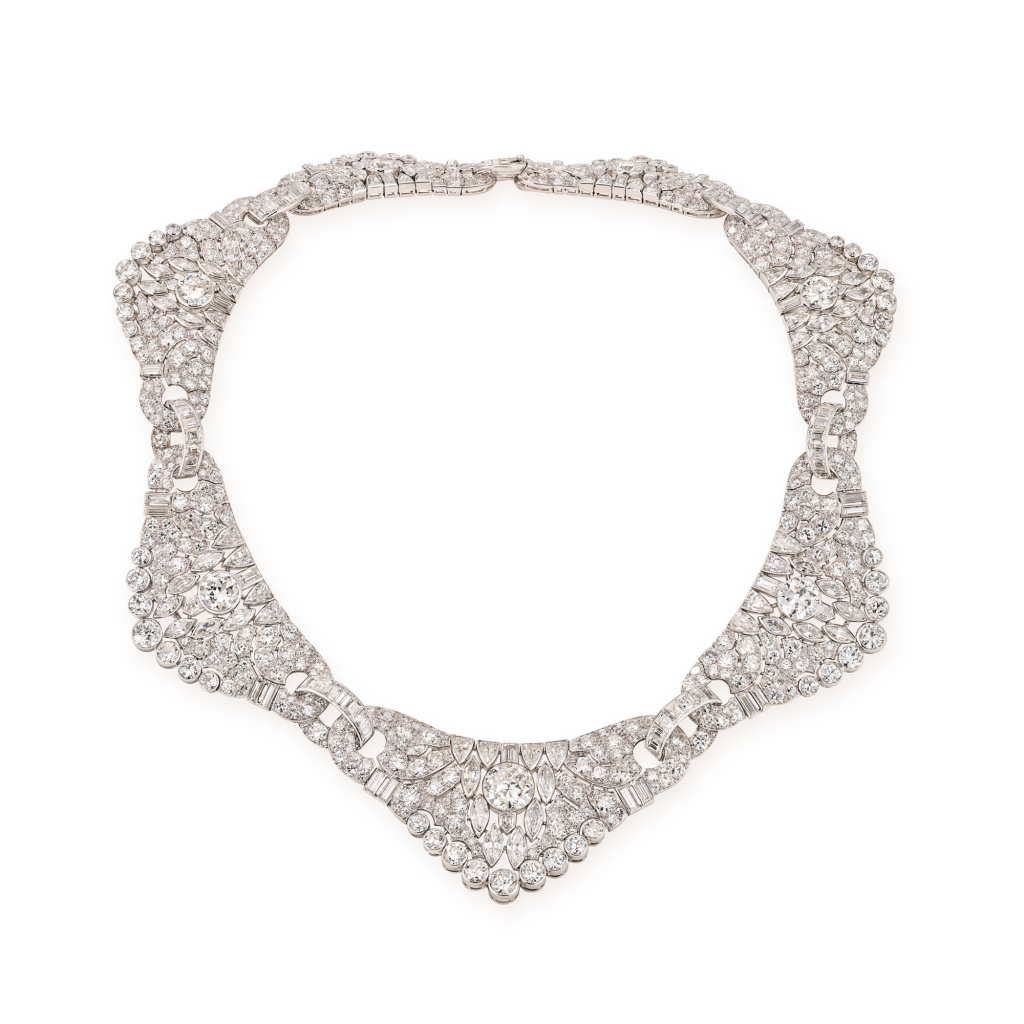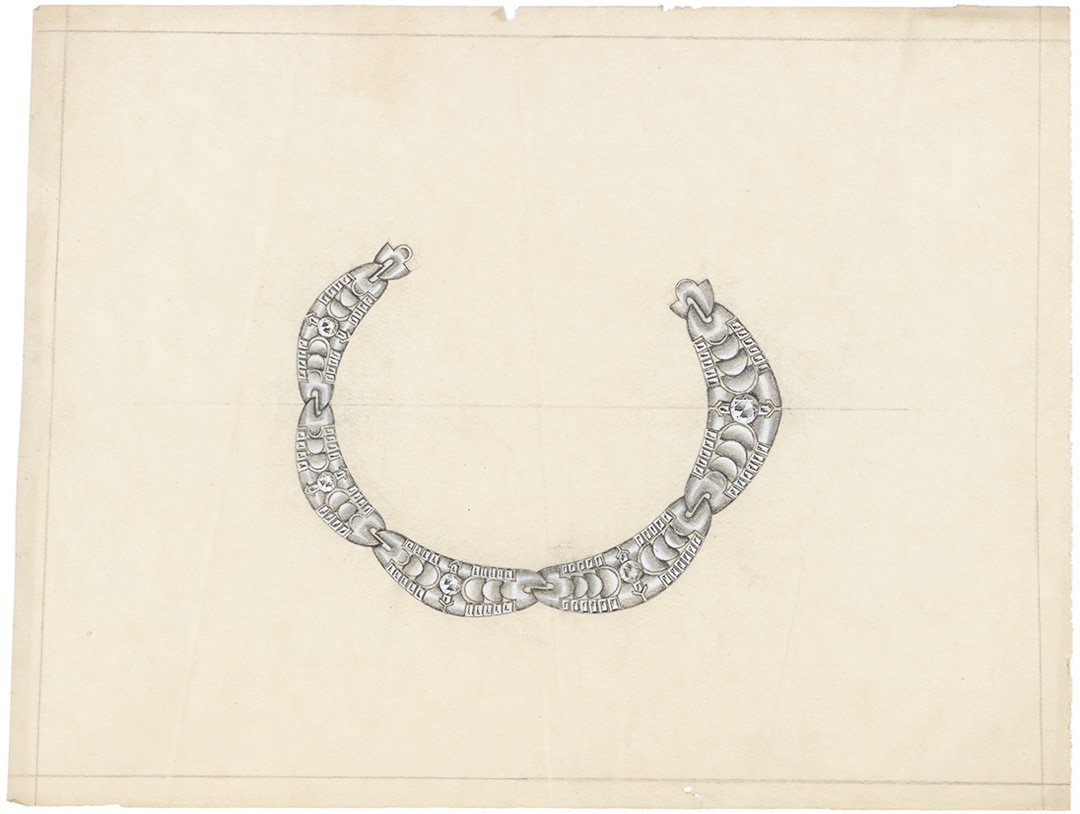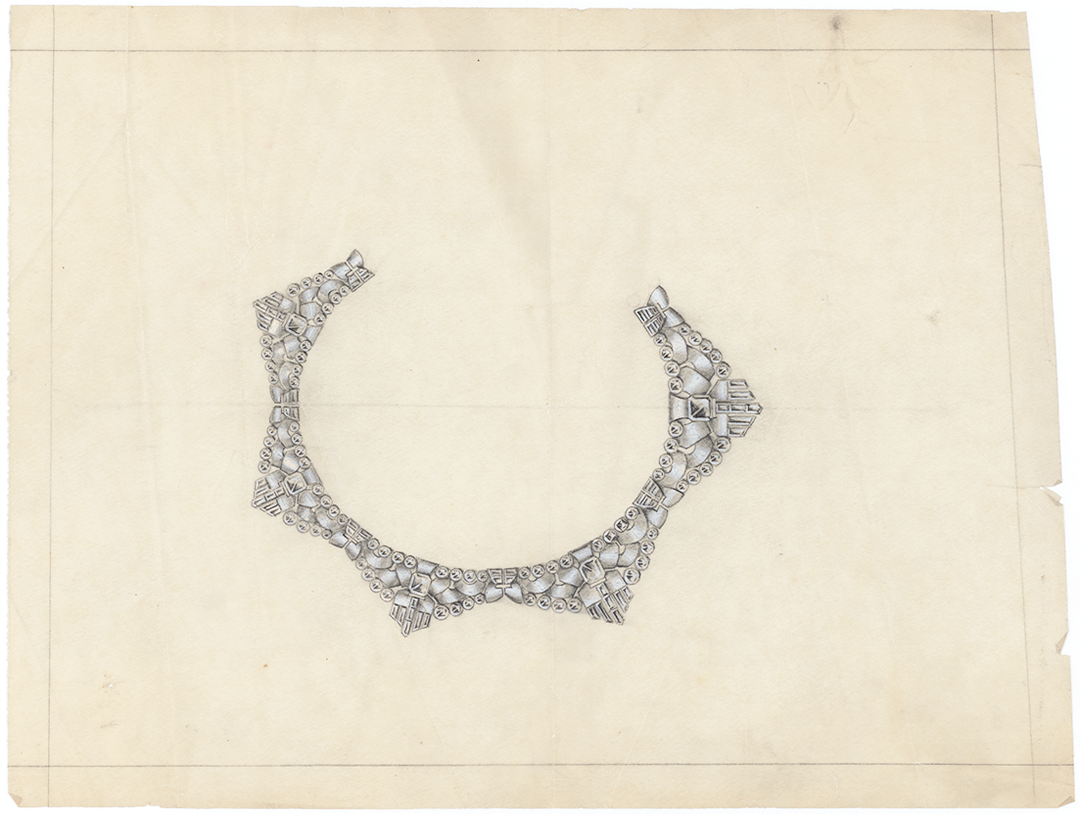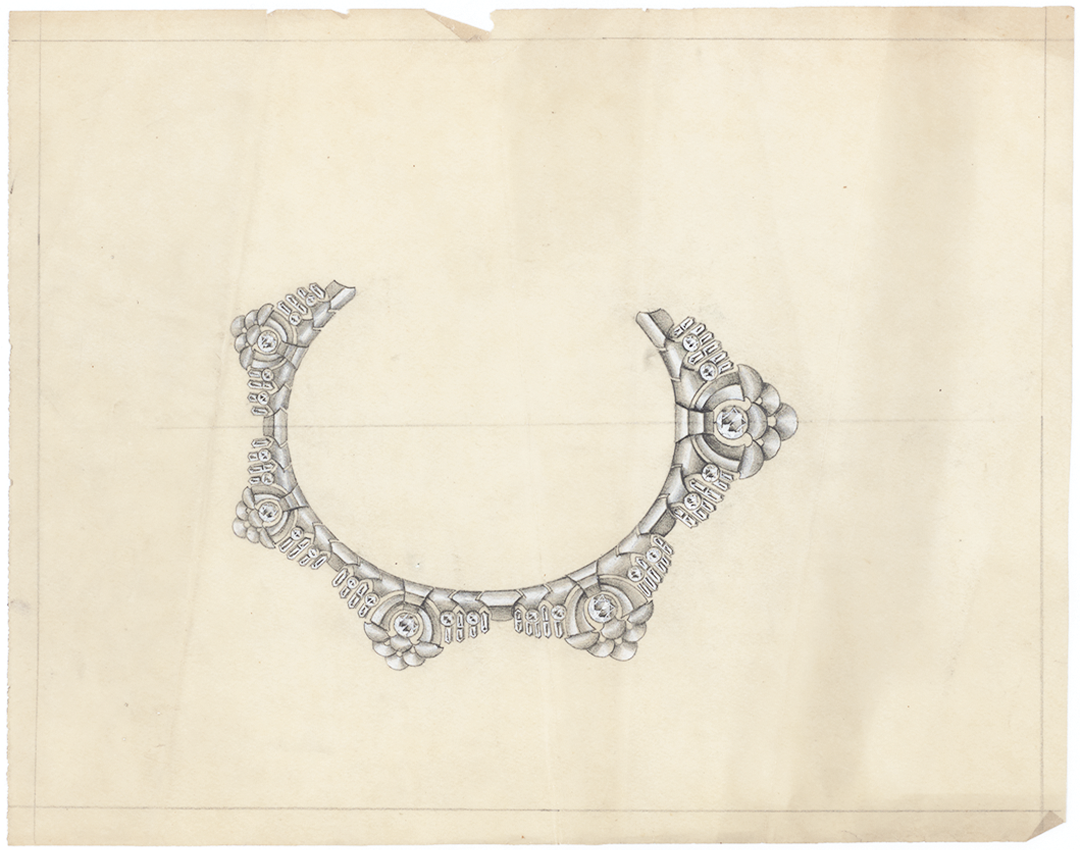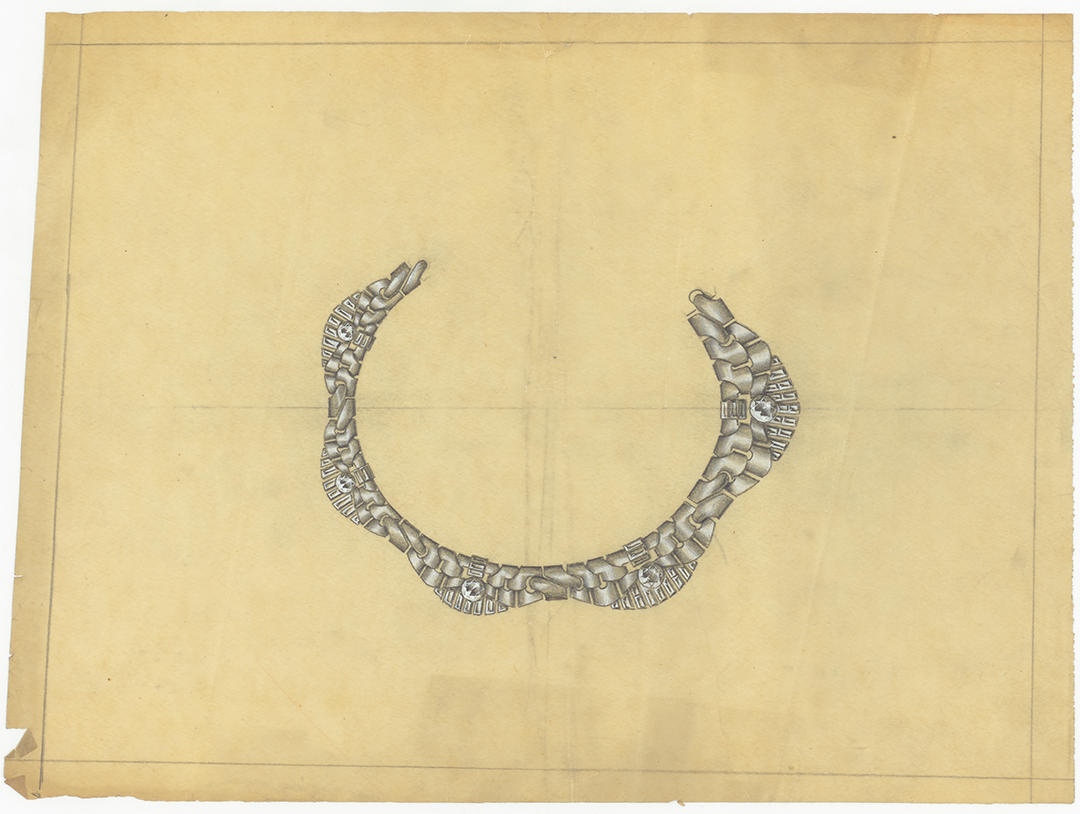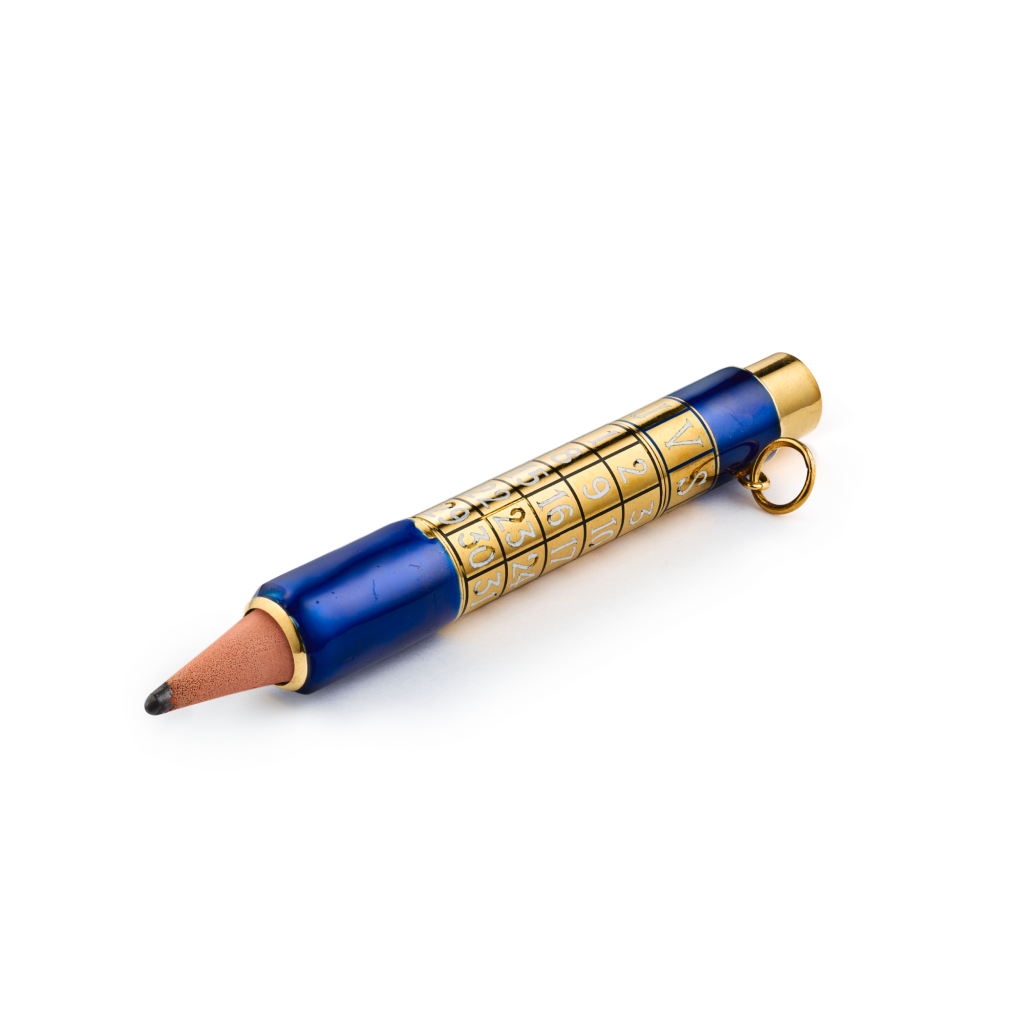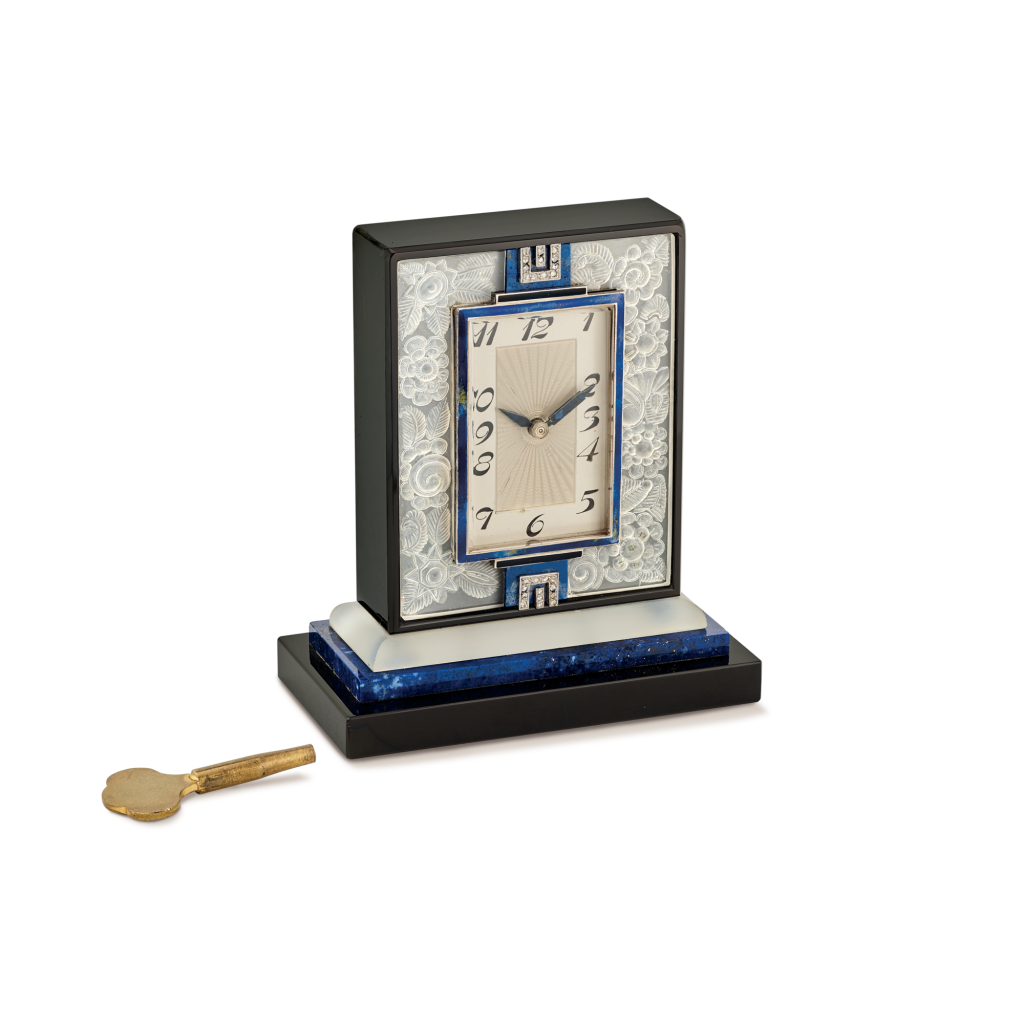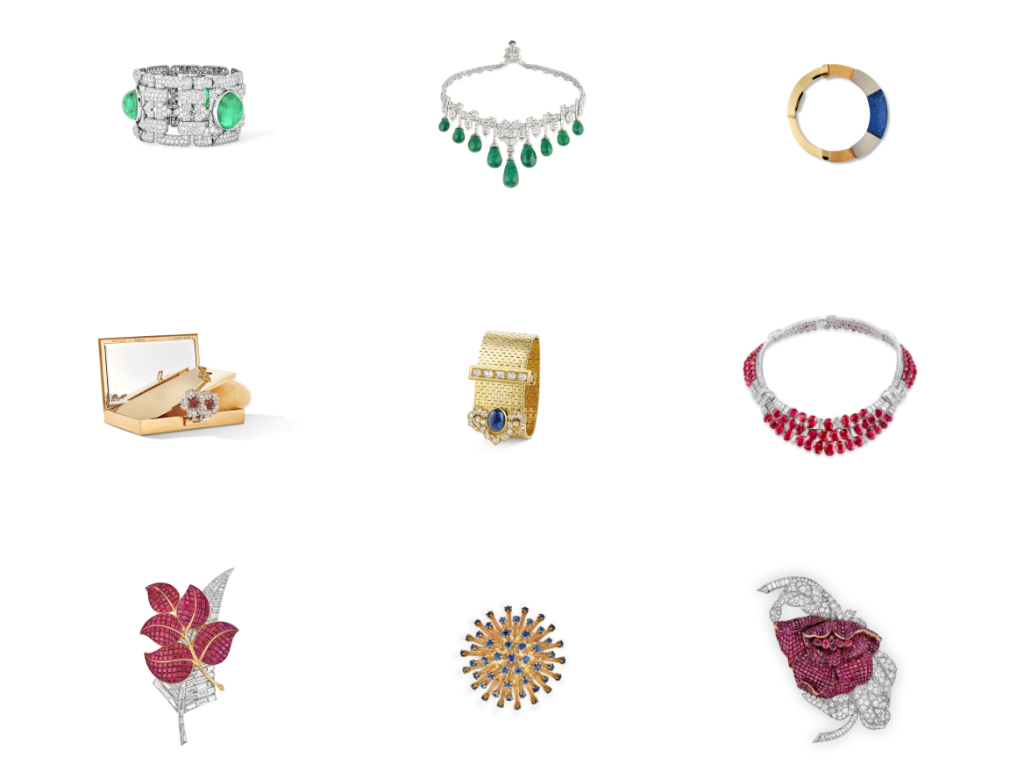
Short necklace
Creation details
- Creation year 1928
- Stone Diamond
- Material Gold
- Material Platinum
- Usage Necklace
- Dimensions 406 mm
This short necklace was created at the passage between one decade and another and illustrates the transition between the geometric stylization of the early 1920s and the search for more emphatic proportions typified by jewelry of the 1930s.
To provide greater flexibility when worn, the necklace is divided into seven triangular units joined by platinum links, set with baguette-cut diamonds on the outside and pave-set brilliants on the inside. Each triangle is dec- orated with brilliant-cut diamonds that gradually give way to an openwork design composed of baguette-and navette-cut diamonds as they move toward the tip, ending with a central brilliant.
Variations of necklaces
The Maison’s archives show that this model of articulated necklace was similar to several others produced at the end of 1928. They all have articulated motifs with geometric patterns surrounding a central, circular stone. These necklaces typify the white diamond jewelry of the period, playing upon the different sizes of diamonds available.
The evolution of the 1920s jewelery
This piece appropriates the geometric motifs of the band bracelets created by Van Cleef & Arpels between 1920 and 1925, with its wide pave-set surfaces punctuated with navettes and baguettes. However, the short necklace form itself broke with the long necklaces designed by the Maison between 1924 and 1925. Furthermore, the 1925-style pieces with delicate openwork were replaced by compositions with overlapping, solid, geometric forms. All these differences heralded the Maison’s stylistic evolution, which would prevail in the 1930s and be celebrated at the exhibition titled Les Arts de la bijouterie, joaillerie et orfèvrerie held at the Palais Galliera in 1929.
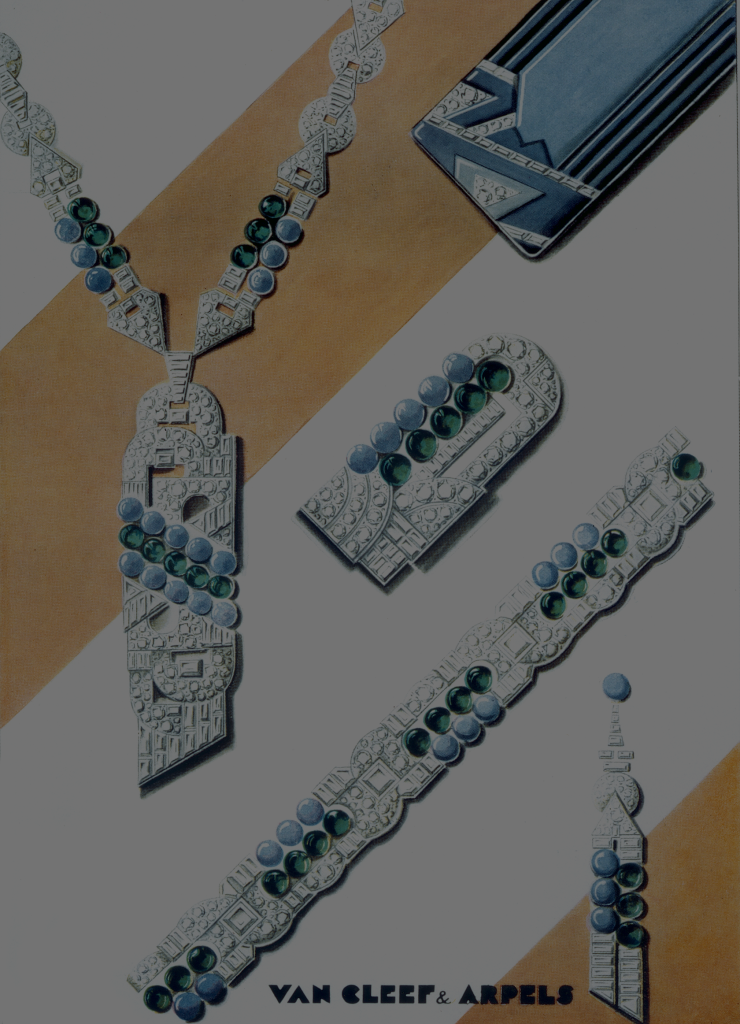
To go deeper
